Can you eat an avocado with brown spots inside? Let’s find out!
If you notice brown spots on your avocados, don’t fret. Not every brown spot on avocado is a sign of contamination. There can be other reasons for brown spots, and we are here to help you find out if you can still consume them.
Avocados are not ripen on trees. They are picked when hard and are ripened in stores or at home to buy a fresh avocado.
Brown spots on the skin and flesh of avocados are a common problem, especially in ripped avocados. A common concern of many of us is to determine whether these spots indicate that avocado is bad or can we consume the avocado with brown spots.
In this article, we will discuss the brown spots on avocados, what these brown spots are how they are caused, and whether or not you can consume the avocado with spots. We will also discuss how we can store avocados to prevent these scars. So let’s jump right onto our topic.
Why There are Brown Spots on Avocado?
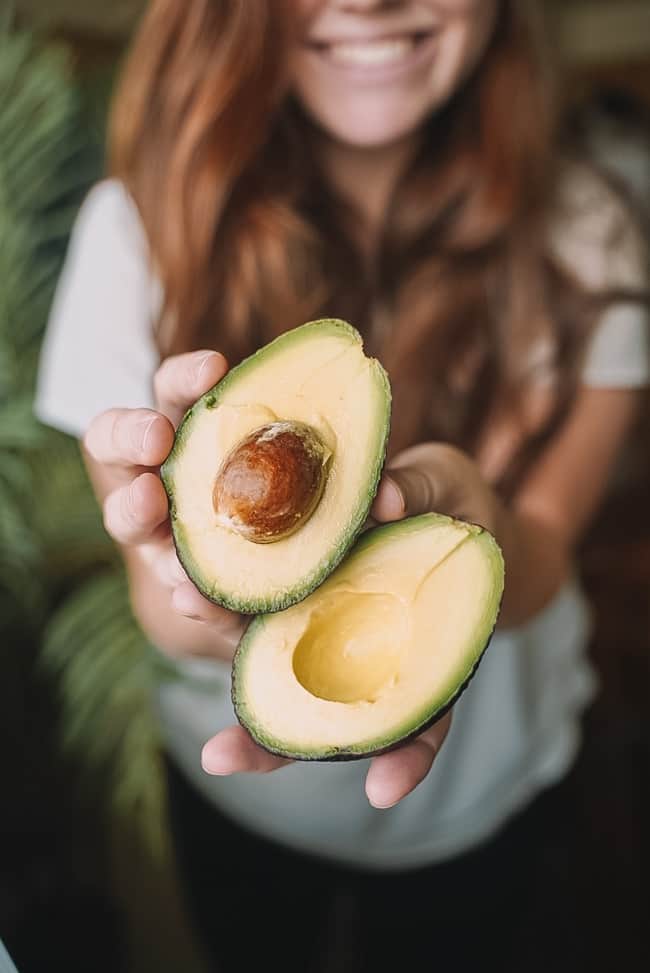
Several reasons can cause brown spots on avocado. It may be a sign that it is overripe and nature is taking its course.
A simple bump or wack while transporting can also bruise the flesh of avocado and it can have a brown spot.
Compression while transportation or handling can also cause brown spots. So not every brown spot on avocado is alarming.
But still, you cannot rule out the possibility of infection as well. So here are seven causes of brown spots on an avocado.
1) Past shelf Life or rotten
Avocado has a shelf life, and after that specific period, like any other fruit, it starts to have brown spots. Even when your avocado looks perfectly well from the outside, it can still have brown spots if left out for too long, especially in humid and hot weather.
If left out in open above 20 degrees, Hass or any other avocado for up to 48 hours can leave brown spots in the flesh. So storage conditions of avocados are very important to consider.
2) Bruising
A single brown spot or two on avocado can be a result of any bump or accidental fall. Flesh bruising on avocado can cause brown spots. It can be a result of mishandling or compression during transportation. An accidental bump or fall can also cause bruising, especially if the avocado is soft and fully riped.
Hard and green avocados can still get brown spots though the damage is not noticeable when avocados are green and firm. Damage is often noticeable in riped and softened avocados.
Many reasons can cause bruising, like the rough dropping of fruit, compression between other fruits during transport, or dropping fruit on the ground.
3) Rancid Avocado
The rapid browning of avocado is a consequence of its exposure to oxygen in the air. When oxygen or microbes damage or break down the fat of fruit, it goes rancid.
A rancid avocado has brown spots. It tastes and smells like a chemical.
4) Discoloration
Discoloration usually starts from the flesh of the fruit and goes upwards. This discoloration of brown spots on avocado is caused by a chilling injury.
A chilling injury is when the fruit is stored at a freezing or low temperature. Storing green avocados in less than 5 degrees for more than recommended days can cause discoloration.
5) Pest Infection
If brown spots on avocado are not restricted to one place but are found regular in both flesh and peel, it can be caused by a pest infection. Persea Mites or Six-spotted mites can cause light brown scars. The bug causes the mottle brown scars on the avocado.
6) Fungal infection
Brown spots on the leaves and flesh of avocado can be caused by fungal infection as well. Anthracnose is a fungal infection that is characterized by a brown spot on flesh.
Can We Eat Avocado With Brown Spots?
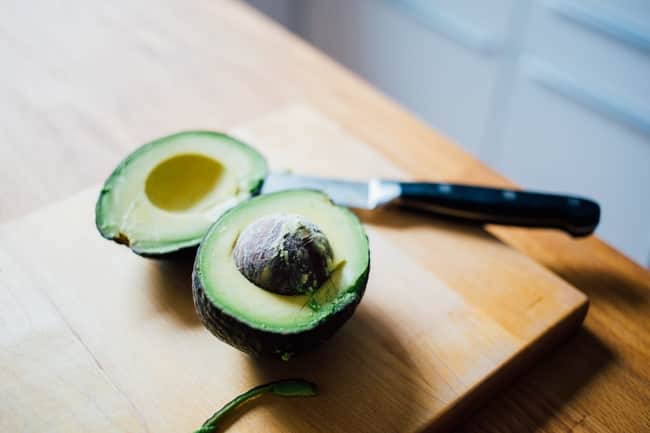
Like we have just mentioned, brown spots can be caused by many reasons. Some brown spots are just bruising on skin or flesh due to compression. Others can be a sign of rotting or even an infection.
Once the avocado is ripped, the fruit starts to spoil. You can delay the rotting process by storing the avocado properly.
If brown spots are caused by bruising, you can consume the fruit. You can cut the affected part if it does not taste good and consume the other parts.
You can also consume avocado if brown spots are caused by aging. As long as it smells and tastes good, you can use the avocado in salads and shakes.
However, if brown spots are caused by infection or fungus, you better leave the fruit alone.
Here are some of the signs to know if avocado has gone bad.
Too Tender on touch
A fully ripped avocado is slightly tender on the touch. It is fully riped. However, if it’s too mushy and dented if you press it, then it’s probably over riped. Over riped avocado can with brown spots may also have freckles skin. A rotten avocado has brown or yellow spots.
Smell and Taste
Once you open the avocado, it becomes easy to determine if you can consume it or not. Isolated spots can be cut away. As long as avocado smells fresh and tastes good, it can be used.
If it has a bad flavor or a foul smell, you should better discard it.
Rancid fruit
A brown or rancid part of avocado may taste bitter, but it is safe to consume.
Bacterial and Fungal Infection
Brown spotting due to compression or rotting is different from an infection. If the fruit is infected, it is not good to be consumed at all.
Oxidation
If the avocado is cut and left out in the open, it may get a brown spot with time. It is because oxygen in the air reacts with the enzymes of fruit. You can still eat the avocado if it is stored in the fridge.
How long is the shelf life of an avocado?
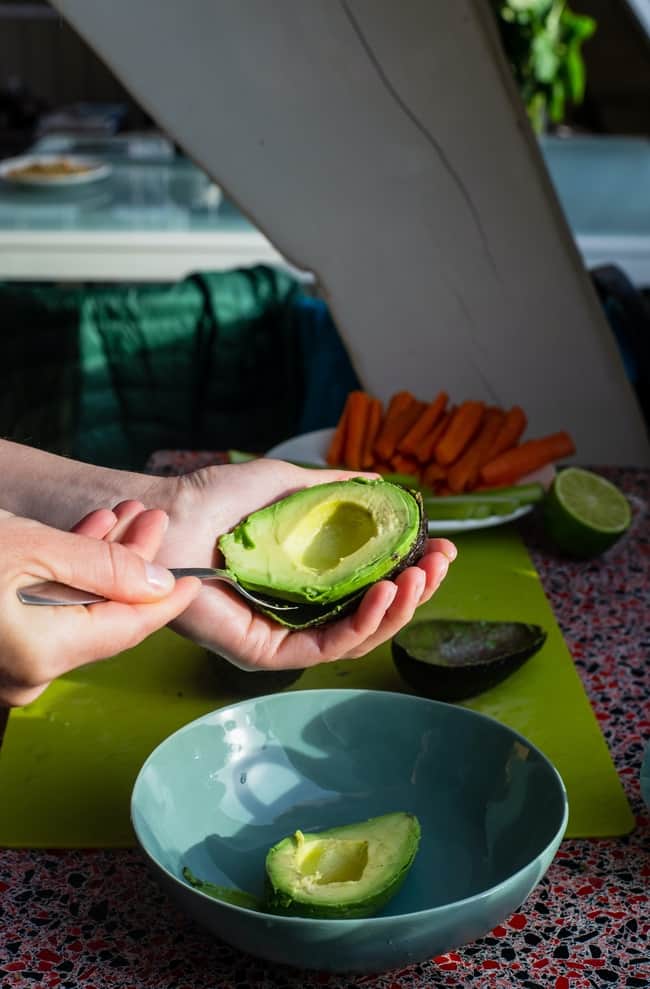
Avocado’s shelf life can be enhanced with its proper storage. The shelf life of avocado can be determined by many factors, like if it is riped or not.
Shelf life of a ripe avocado
The shelf life of a riped avocado is 3-5 days in a fridge. You can freeze the avocado and increase its shelf life. It stays good in your freezer for up to 6 months.
Shelf Life of an Unripe Avocado
The shelf life of an unripe avocado is longer than a ripened ones out in the pantry. It can last 3-7 days at room temperature.
Shelf life of a Half Avocado
Avocado is packed with energy and calories. If you don’t intend to use more than half, you can store the other half in a fridge for up to 24 hours.
Shelf Life of Mashed Avocado
The shelf life of mashed avocado is also 24 hours in the fridge section. However, if you freeze it properly, it can last up to six months.
How to store an Avocado

Leaving a riped fruit out at room temperature can speed up the rotting process. You can leave it in a pantry, at room temperature, or even in a brown bag to speed up the process of ripening.
However, once the fruit is riped in ready to eat, leaving it out can spoil it. You can put the riped avocado in a fridge section for up to 3 days. For long-term storage, you should freeze the avocado.
Let’s look at all scenarios and see where you should store the avocado.
Should I store Avocado in Pantry?
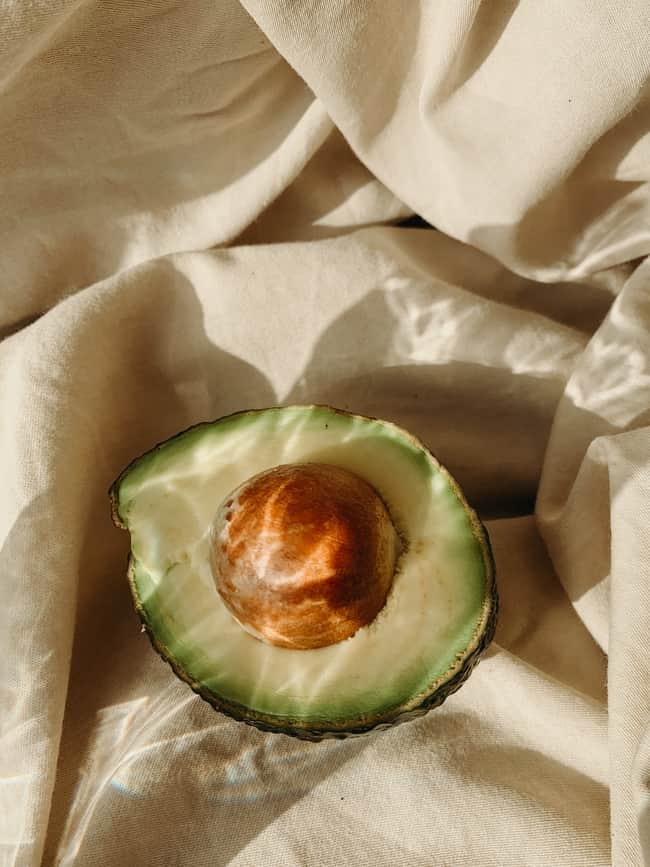
Unripe Avocado
An unripe avocado can be left in the pantry. You can leave it in a brown bag to speed up the process.
Ripe Avocado
Riped avocado should not be left in the pantry. They are already riped, and leaving in a warm atmosphere can spoil them.
You can keep a riped ripped avocado out if you intend to use it in a day, but more than that, you should put it in a fridge or freezer.
Half Avocado
Many times we end up cutting avocado and taking the other half with toast or in the salad. The other half should not be left out or in the pantry. The decaying process of an opened fruit is faster than whole fruit. So if you happen to have a piece of avocado left, keep it in a fridge so you can use it in a day or two later.
Storing An Avocado In Fridge

Unripe Avocado
Putting an unripe avocado in the fridge can slow the ripening process. It should be left at a warm temperature to ripe properly. The low temperature of the refrigerator can delay the process, and avocado may not ripe at all.
Ripe Avocado
The fridge is the right place to store a ripped avocado. You can keep it in the fridge, and it stays good for 3-4 days. For more extended storage, a fridge is also not a good option.
Half an Avocado
You can store the other half in the fridge, but it won’t stay good in an even fridge for long, so ideally, you should use it within a day or two.
Storing An Avacodo In the Freezer

The freezer is the right place to store avocados if you intend to store them for a longer period.
Unripe Avocado
Unripe avocado should not be left in the freezer. The ripening process will be stopped in freezing temperature, and once you can’t do that after thawing as well. Defrosting damage the cellular cells of fruit. So storing an unripe avocado in the freezer is useless, and it will not store your fruit for a long period.
Ripe Avocado
A fully riped avocado can be stored in a freezer for up to six months. It’s a great way to store avocados if you happen to have them in bulk and want to preserve them for a longer period.
You can wash and pat dry the avocado. Plastic wraps each avocado and puts it in a sealed bag. If properly stored, you can keep using the batch for up to six months.
Half An Avocado
You can freeze the other half in the freezer as well. Peel the other half and deseed it. Put it in an air-tight bag, and it can be used later. You can also make a puree of avocado and freeze them into chunks.
How to Know if An Avocado has spoiled?
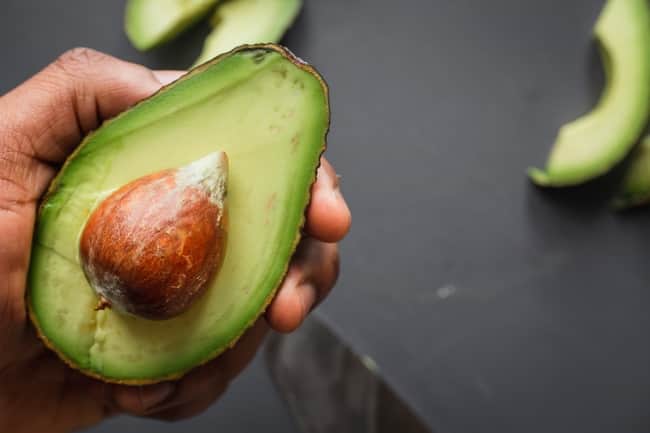
As avocado spoils, you may note changes in its texture, feel, color, and even taste. Here are some clear indications of an avocado gone bad.
Wrinkled and loose Skin
An overly riped and spoiled avocado has loose and wrinkly skin. As compared to a fresh avocado, a spoiled fruit has loose skin.
Tender on Touch
A riped fruit is tender on touch, but a spoiled fruit is almost mushy. It leaves a dent on even a slight touch.
Foul Smell
A spoiled avocado has a foul smell. A sour-smelling avocado is infected, and better should be discarded.
Taste
Though you don’t need to taste a rancid or spoiled avocado if you see all other signs, if you have a brown spot on avocado, you can taste the avocado and see if it can be used after cutting away a bad part. If it tastes normal, then you can cut the brown part and use it.
Final Words
Avocado is one of the healthiest fruits, and it’s not inexpensive as well. Make sure you buy clear and healthy fruit while buying. The skin should be taut and free of any wrinkles. There should not be any spots on the skin. Of course, you can’t open the fruit to see if there are spots on flesh or not.
Even a good-looking avocado can have brown spots due to compression or bruising due to mishandling or transportation. A mild bruise can be cut away, and you can still use the fruit if it does not affect the taste or smell of avocado. However, an infected avocado with brown spots will have a foul smell and a bad taste as well. So it is not very difficult to tell if an avocado is bad or you can still use it.
So, do you already know if you can eat an avocado with brown spots inside? Please, feel free to leave your comments below!
Other articles:


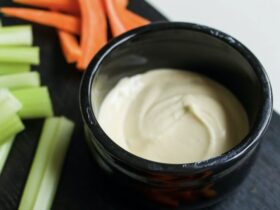

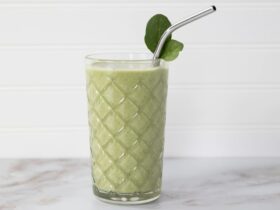



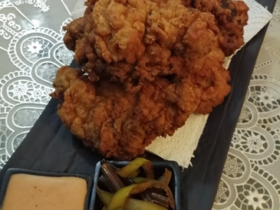



Leave a Reply